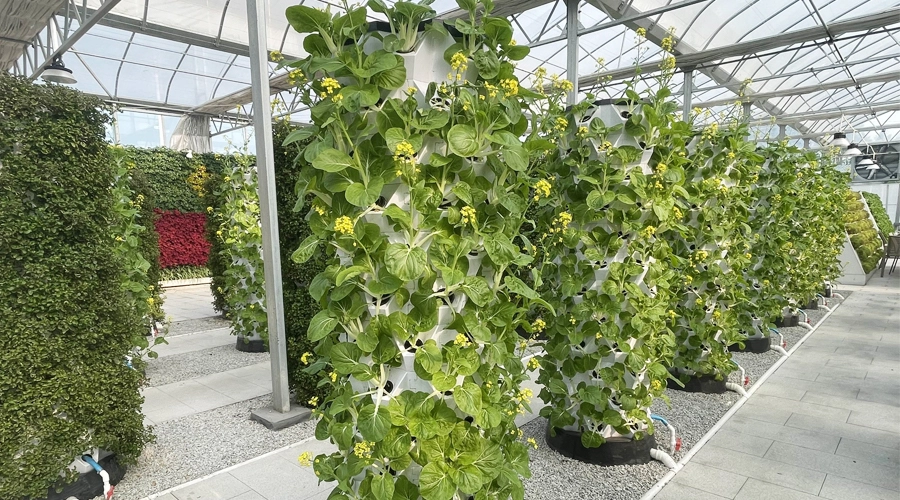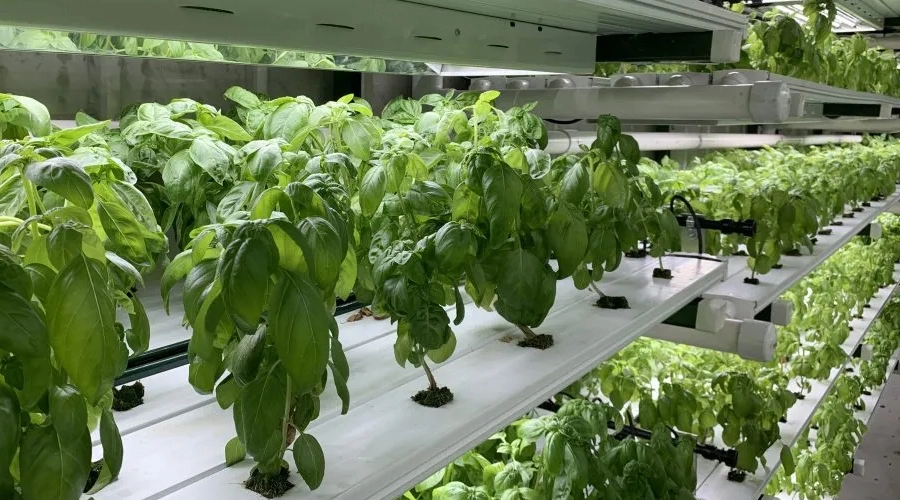Inhoudsopgave
Vandaag, binnenkweeklichten zijn een essentiële aanwezigheid voor plantenteelt binnenshuis, en je zult ze overal zien.
Heb je ooit een interessant fenomeen opgemerkt? Planten worden goed en gezond in natuurlijk licht dat geen kleur lijkt te hebben, maar waarom zijn kweeklampen paars en zien sommigen er wit uit?
LED -lichten zijn zelfs niet paars, ze zien er gewoon paars uit in onze ogen. Aangezien indoor groeilampen hoge intensiteit blauw en rood licht uitzenden, een mengsel van blauwe en rode golflengten in het kleurspectrum, is dit de paarse LED-betekenis. In het bijzonder zijn de blauwe golflengten van licht belangrijk voor vegetatieve groei, terwijl de rode golflengten belangrijk zijn voor bloei en vruchten.
In dit artikel zullen we de redenen achter de paarse LED -kweeklichten bespreken en of het het waard is. Laten we erin duiken!
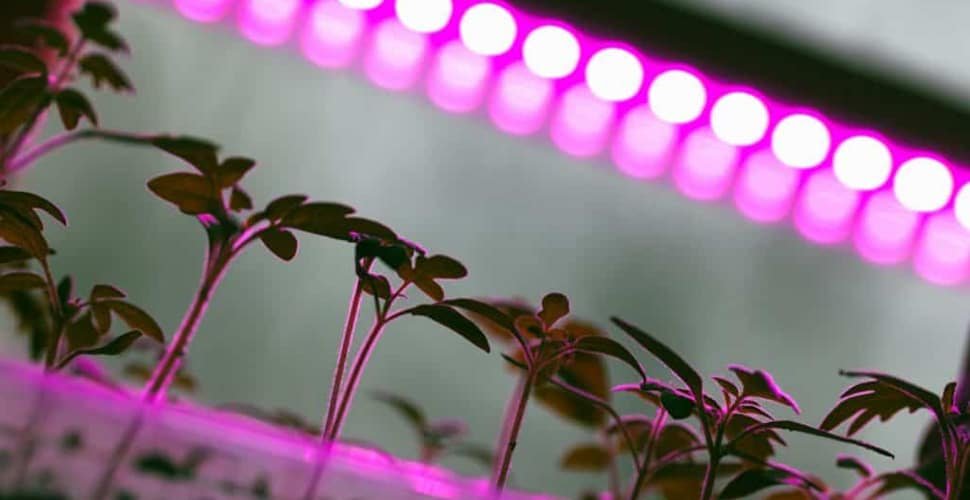
Wat maakt plantenkweeklampen paars?
LED -lichten bestaan uit verschillende combinaties van golflengten die het licht dat u voor uw planten levert, produceren. Maar er is meer dan slechts één golflengte voor een bepaalde kleurenset. Fabrikanten van fabrikanten van plantengroei zullen vaststellen Specifieke kleurgolflengten die gunstig zijn voor plantengroei om LED -plantlichten te creëren. Hun doel is om licht te creëren dat gunstig is voor uw binnenplanten en proberen licht te voorkomen dat de planten niet nodig hebben.
Golflengte en kleur
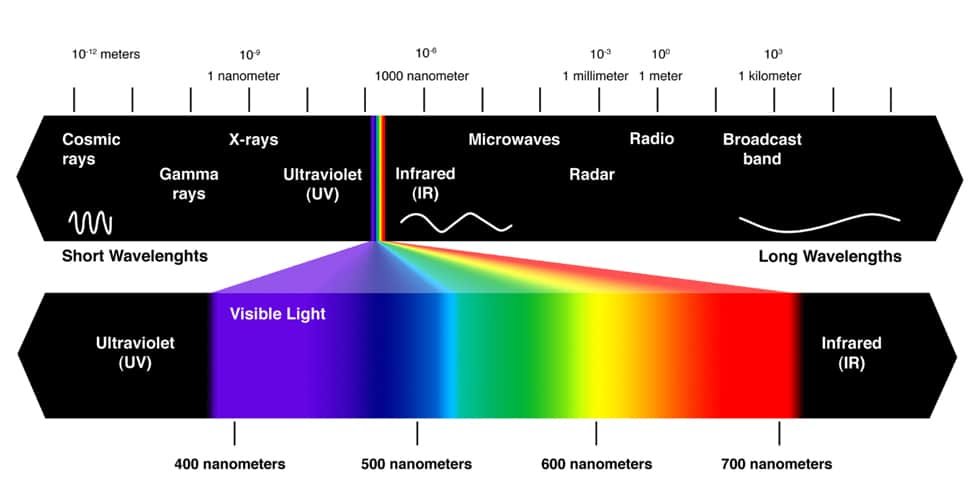
BLUE lichtgolflengte ligt tussen 430 en 500 nm.
Rode lichtgolflengten liggen tussen 625 en 740 nm.
UV -golflengten zijn tussen 100 en 450 nm.
Er zijn drie soorten UV-golflengten, waarvan er twee worden gebruikt in groeimamers: UV-A en UV-B.
- UV-C: 100 tot 290 nm.
- UV-B: 290 tot 320 nm.
- UV-A: 320 tot 400 nm.
Verre rode golflengten liggen tussen 740 en 1050 nm.
De paarse kleur die wordt uitgestoten door LED -verlichting is een combinatie van de blauwe en rode golflengten van licht die de meeste LED's vormen. Onderzoek heeft aangetoond dat beide golflengten van cruciaal belang zijn in de ontwikkeling van planten, daarom is LED GROW LICHT fabrikanten Gebruik meerdere rode en blauwe golflengten in hun kweeklampen.
Blauwe lichtgolflengte
- Blauwe lichtgolflengten bevorderen de gezondheid van planten door groei te reguleren.
De blauwe kleur van kweeklampen remt de verlenging van de stengel en het is gunstig voor planten die dwerg zijn. De stengels van gebladerte planten blootgesteld aan blauw licht zijn korter en de bladeren van deze planten zijn donkergroen.
Daarom zal het licht in het blauwe bereik ook de dikte van de bladeren en het aanwezige chlorofylgehalte beïnvloeden. U kunt planten produceren met dikkere, grotere en donkerdere groene bladeren, afhankelijk van de spectrale behoeften van de plant.
- Blauwe golflengte beïnvloedt ook de bladkleuring.
Een kamerplant met paarse bladeren als een bosmusje heeft blauwe straling nodig. Anders kan het groene bladeren produceren zonder blauw licht. Evenzo zullen bladgroenten zoals boerenkool en broccoli gezondere voedingsstoffen produceren met voldoende blauw licht, waardoor meer adequate hoeveelheden voedingsstoffen zoals vitamines of antioxidanten worden gekregen.
- Blauw licht regelt de bloei van planten.
Hoge intensiteit licht van 20 μmol kan lange-dagplanten bloeien, zoals spinazie, boerenkool en selderij. Het kan ook de bloei remmen voor planten op korte dag zoals chrysanthemums en clivia.
Rode lichtgolflengte
- Rode lichtgolflengten stimuleren fotosynthese voor een betere plantengroei.
Met andere woorden, rood licht heeft de hoogste efficiëntie bij het omzetten van elektriciteit in fotosynthetische fotonen. Dit komt omdat rood licht meestal sterker wordt geabsorbeerd door de groene pigmenten in planten.
Planten die worden blootgesteld aan meer rood licht zullen groter worden. U kunt rood licht gebruiken om de STEM -extensie te bevorderen of te remmen. Ze kunnen ook dunnere bladeren en grotere, grotere planten produceren.
Tips: U moet zich ervan bewust zijn dat u het rode licht moet regelen, omdat te veel ervan planten te lang en slank kan veroorzaken.
- Het is verantwoordelijk voor het verhogen van de snelheid van fotosynthese in planten.
Het rode licht van paarse groeilampen beïnvloedt ook de bloei van de planten, en het is door een rood licht dat planten de meeste energie krijgen.
Combinatie van blauwe en rode lichtgolflengten
Individueel helpt blauw licht planten te groeien, terwijl rood licht helpt bij bloei en fotosynthese. Geel en groen absorberen het minste. Planten reflecteren dit licht en zijn daarom groen van kleur.
Fabrikanten van topgroepen van topgroepen maken echter geen plantverlichting die alle golflengten bevatten tijdens het productieproces. Omdat planten niet al het licht evenveel absorberen. En ze zullen de juiste en specifieke lichtkleur kiezen en u haalt het meeste uit uw LED -binnenkweeklichten. Gebruik de juiste lichten voor Bespaar grote hoeveelheid elektriciteit.
De combinatie van blauwe en rood lichtgolflengten biedt uw planten het licht dat nodig is om alle groeipatronen tegelijkertijd te stimuleren, wat precies is wat uw planten nodig hebben om te gedijen.
Hun combinatie is belangrijk omdat het de planten in staat stelt om circadiane ritmes zelfs binnen te volgen. Waardoor de planten bijna weten wanneer ze moeten opduiken en wanneer ze moeten rusten, net zoals ze in het leven buitenshuis doen.
Na het kiezen van de juiste kweeklichten Voor binnenplanten moet u ook aandacht besteden aan de afstand die u plaatst, de juiste plek Hang ze op en hoe ze te gebruiken om de uitvoer te maximaliseren.
Economische overwegingen
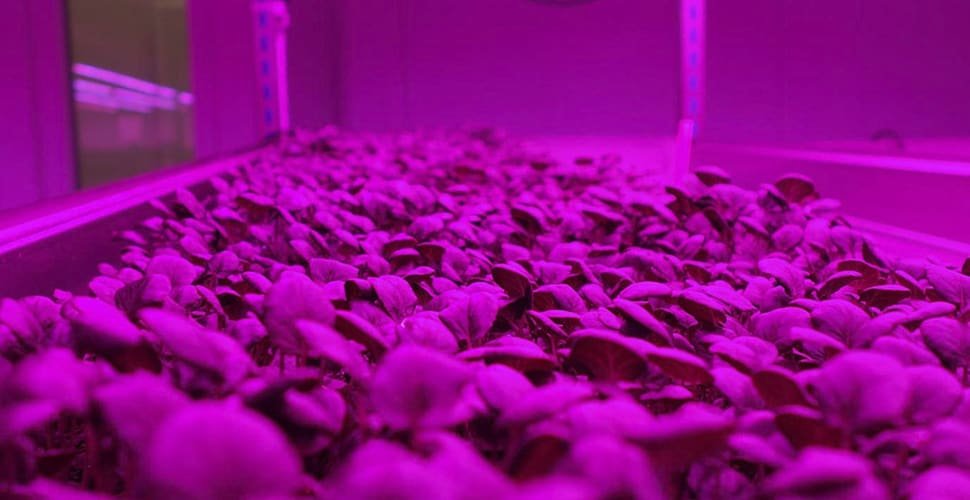
Paarse kweeklichten zijn niet economisch zinvol voor thuiskwekers
Vanuit commercieel oogpunt zijn rode en blauwe LED -chips de goedkoopste om te kopen. Vroege fabrikanten van plantenkweeklampen zouden deze specifieke combinatie van spectra gebruiken om elk lichtrecept te formuleren dat ze wilden. Omdat LED's op dat moment duur waren, concentreerden sommige fabrikanten zich alleen op het leveren van die rode en blauwe lichten die absoluut cruciaal waren voor planten.
Maar in het afgelopen decennium zijn de kosten van LED -technologie gedaald en zijn de kosten voor de productie en het bedienen van deze lichten dramatisch gedaald.
Tegenwoordig kost een typisch 10-30 W-blauw of rood licht voor planten minder dan $ 20 per jaar voor elektriciteit. Vergeleken met een full-spectrum plantenlicht van hetzelfde wattage tegenwoordig, is de elektriciteitsbesparing van een paars plantenlicht slechts een dollar of twee minder per jaar dan een volledig spectrum.
Het verschil in elektriciteitsbesparingen is niet groot genoeg om de economie van paarse plant te laten groeien, zinvol voor thuisweders.
Tegenwoordig kost een gewone 10-30 W indoor paarse kweeklicht minder dan $ 20 per jaar voor elektriciteit. In vergelijking met een volledig spectrum groeit het licht van hetzelfde wattage vandaag, is de elektriciteitsbesparing van een paars plantenlicht slechts een dollar of twee minder per jaar dan een volledig spectrum. Het verschil in elektriciteitskosten is niet significant. We denken dus niet dat de economie van paarse plantenkweeklampen zinvol is voor thuiskwekers.
Maar als u van plan bent om dit paarse licht voor planten in het magazijn te gebruiken en verticale landbouwbewerkingen uit te voeren, dan kan het van meer betekenisvolle waarde zijn. Purple Light profiteert veel, maar gezien zijn andere nadelen ervan, denken we niet dat dit zo belangrijk is als vroeger.

Het rode en blauwe spectrum is niet uniek
Dankzij onderzoekers op dit gebied, de onderzoek en de wetenschap van hoe planten de afgelopen 20 jaar op licht reageren, hebben onze kennis van het licht verrijkt.
- UVA / UVB beïnvloedt etherische oliën, smaken en geuren.
- Greenlight is erg goed in de luifel en bladpenetratie, beter dan rood en blauw.
- Far-Red is een bijzonder goede aanvulling op Blue, en het helpt om de uitbreiding van plantencellen te verbeteren.
Paarse kweeklichten zijn niet prettig
Er is een standaard voor hoe comfortabel of aangenaam licht aan het menselijk oog is dat we de CRI of Color Rendering Index noemen. Simpel gezegd, CRI bepaalt hoe natuurlijk de kleur van een object eruit ziet onder verschillende soorten verlichting.
Als het licht er vreemd uitziet voor het menselijk oog, te scherp is en er onnatuurlijk uitziet, is de CRI -waarde laag. Dit kan ook betekenen dat het gewoon een combinatie is van rode en blauwe LED -chips.
We hebben ook geleerd dat paarse kweeklichten een smal spectrum van licht uitzenden, waardoor planten de specifieke golflengten van licht hebben die ze nodig hebben om te groeien en te gedijen. Hoewel rood of blauw licht voor planten geschikt is voor het tuinieren binnenshuis, kan de kleurtemperatuur mensen lange tijd minder comfortabel maken. Dit kan leiden tot oogbelasting of hoofdpijn. Als u ook het paarse plantenlicht gebruikt, wordt aanbevolen dat u uw bril meeneemt, zelfs als het tijdens gebruik zeer gewone zonnedinten zijn.
Licht dat er daarentegen op uiteraard aangenaam uitziet voor het menselijk oog, heeft een hoge CRI -waarde en kan bestaan uit veel verschillende kleurencombinaties van LED -chips.
Samenvatten
Hopelijk heb je inmiddels het antwoord gevonden op waarom zijn kweeklichten paars zijn? En hopelijk beantwoordt dit artikel de vraag of het de moeite waard is om een paarse plantlamp te kopen.
Tegenwoordig zijn de meeste kweeklichten niet langer paars. Naar onze mening is een betere keuze een volledig spectrum LED -kweeklicht dat zorgt voor een optimale plantengezondheid en een comfortabelere omgeving.
Als u in een zeer hete omgeving woont en de binnenkant van uw huis koeler wilt voelen, zoek dan naar lichten met een rating van 5000-5500K. De spectrale verdeling van deze lichten leunt naar blauw en de temperatuur van de kweeklampen zal relatief koeler zijn.
Als je in een koeler klimaat leeft of een kleinere ruimte hebt, raden we een warmere lichttemperatuur aan in de 2700 – 3500K bereik. Deze zijn scheef rood en hebben een warmere gloed, aantoonbaar beter voor het vruchten en bloeien.
Als u meer wilt weten over het vinden van het perfecte plantenkweeklicht voor uw binnenplanten, raden we aan Zijn LED-lampen met volledig spectrum goed voor planten??
Jayes
Als Digital Marketing Manager bij AUXGROW combineert Jayes een passie voor hydrocultuursystemen en expertise in LED-groeilampen. Met praktijkervaring en diepgaand inzicht begeleidt Jayes u door de wereld van duurzame teelt.




